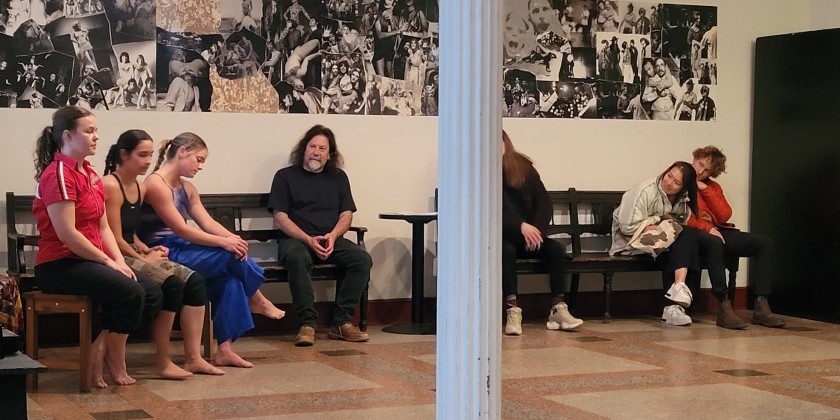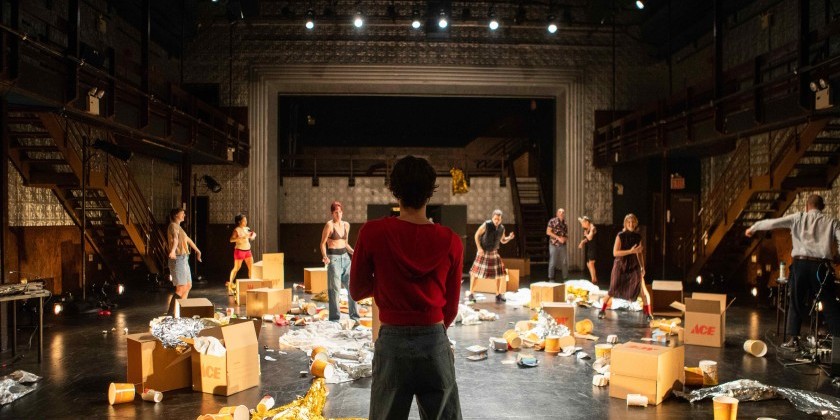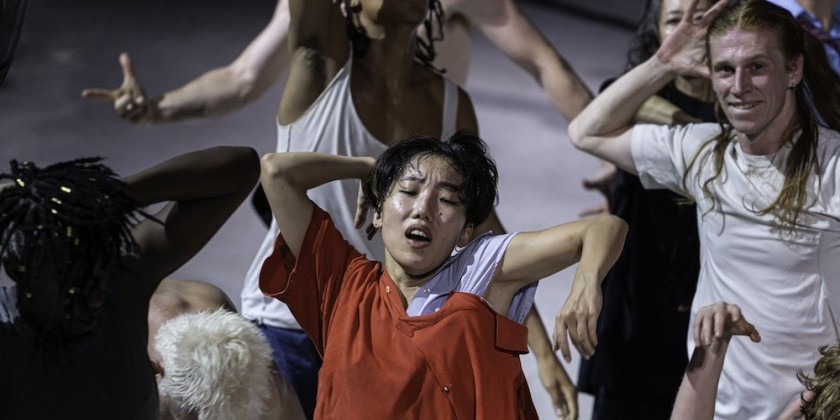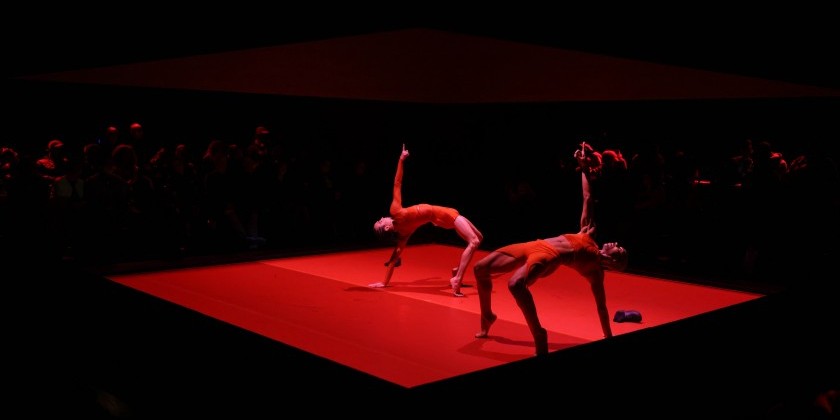IMPRESSIONS: Bobbi Jene Smith Blurs Boundaries in "Broken Theater" at La MaMa
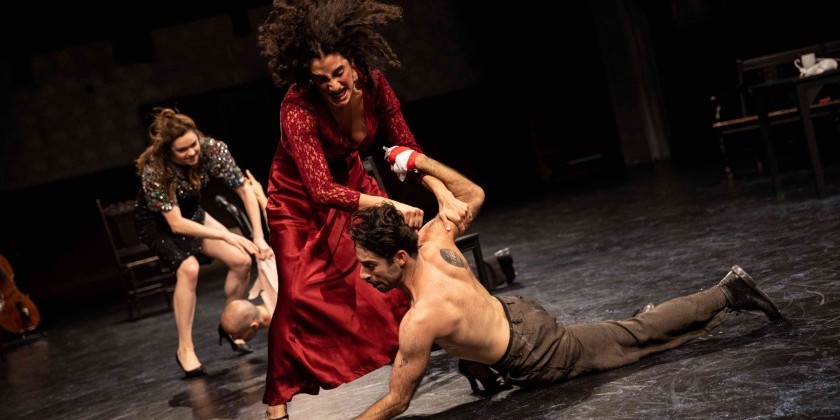
Broken Theater was produced by AMOC* and New Dialect, and commissioned by La MaMa, Mass MoCA, AMOC* and New Dialect
Director: Bobbi Jene Smith
Choreographers and Performers: Mikael Darmanie, Julia Eichten, Vinson Fraley, Jonathan Fredrickson, Keir GoGwilt, Coleman Itzkoff, Jesse Kovarsky, Yiannis Logothetis, Or Schraiber, Bobbi Jene Smith, Mouna Soualem, Stephanie Troyak
Lighting Designer: John Torres | Costume Designer: Victoria Bek | Dramaturg: Zack Winokur
Associate Lighting Designer: Christopher Gilmore | Producers: Cath Brittan and Rebecca Sigel
Stage Manager: Anna Drozdowski | Costume Supervisor: Jazmine Raye
Assistant Stage Manager: Mars Doutey | Company Manager: Landon Wilson
Dates: April 20 - 30, 2023
Broken Theater, performed at La MaMa Experimental Theatre Club’s Ellen Stewart Theater from April 20-23, left audiences buzzing with questions: What is it about? Why does Bobbi Jene Smith, director and dancer, slash a sack of flour and watch it spill on the floor? What is dancer/actor Mouna Soualem saying in French? Who are these characters and what is their story?
But the answers to these questions, and innumerable others, is beside the point. Perhaps we’re not supposed to know. And it’s precisely this surrender to the unknown that makes Broken Theater so refreshing.
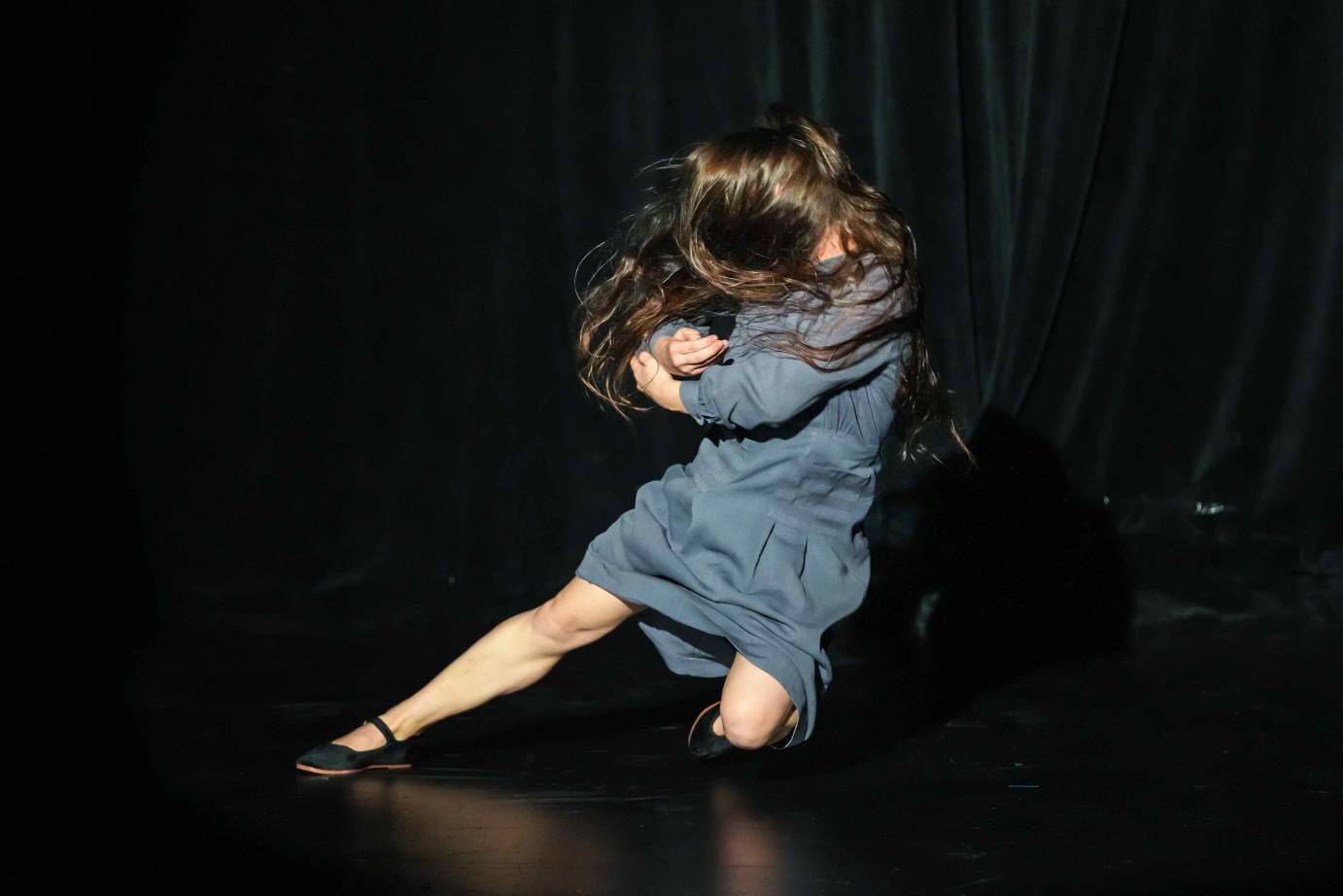
The cast first started rehearsals for Broken Theater during the most restrictive and uncertain time of the Covid-19 pandemic.
“We began with the word 'broken',” says Bobbi. “For me, at that time, it felt like we were living in a broken theater of a world. Where was the script? When did we fall off course? Where were the people who had rehearsed for this life?” The work investigates this feeling of disillusionment. What would happen if a group of people were stuck in a theater with no director or script?
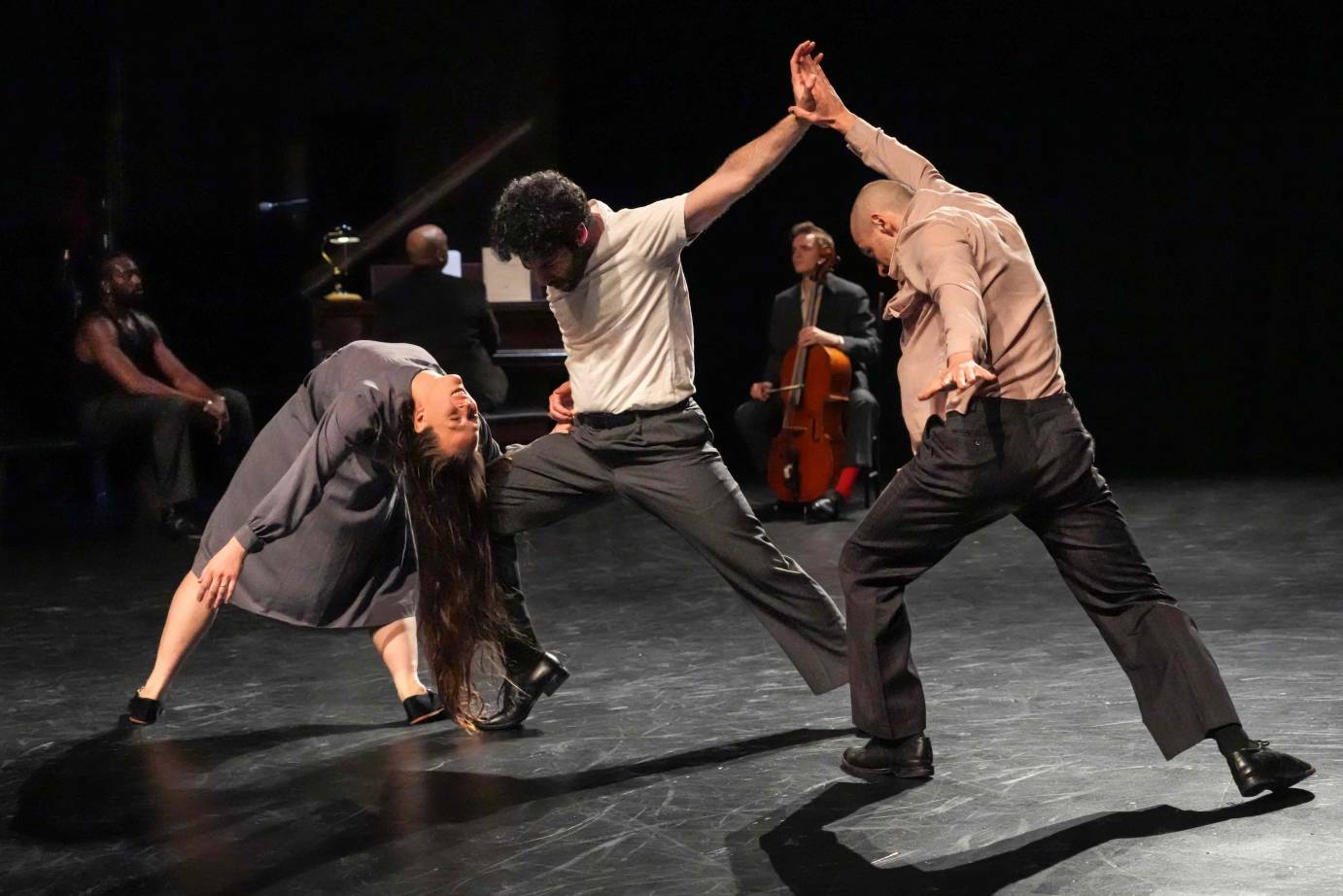
(Foreground, left to right) Bobbi Jene Smith, Or Schraiber and Yiannis Logothetis; (Rear, left to right) Vinson Fraley, Mikael Darmanie, Coleman Itzkoff; photo by Maria Baranova
In this broken-theater-world, there are inevitably moments of chaos, strife, and solitude as people clash artistically and emotionally, or choose to work alone. But the drama is balanced with moments of calm respite and energizing play. An example of art reflecting life, every scene, dance, and song is woven together in a beautiful mess. Like vignettes loosely strung together, they hang in the balance with deconstructed ideas of performance, rehearsal, play, theater, actor, musician, and dancer.
“The structure is made in the hopes that it continues to surprise and helps the audience let go,” says Bobbi, “to not look for answers but to search for their own connections. There is no one story. But many stories intersecting, dancing, colliding, contradicting, echoing, and disappearing…”
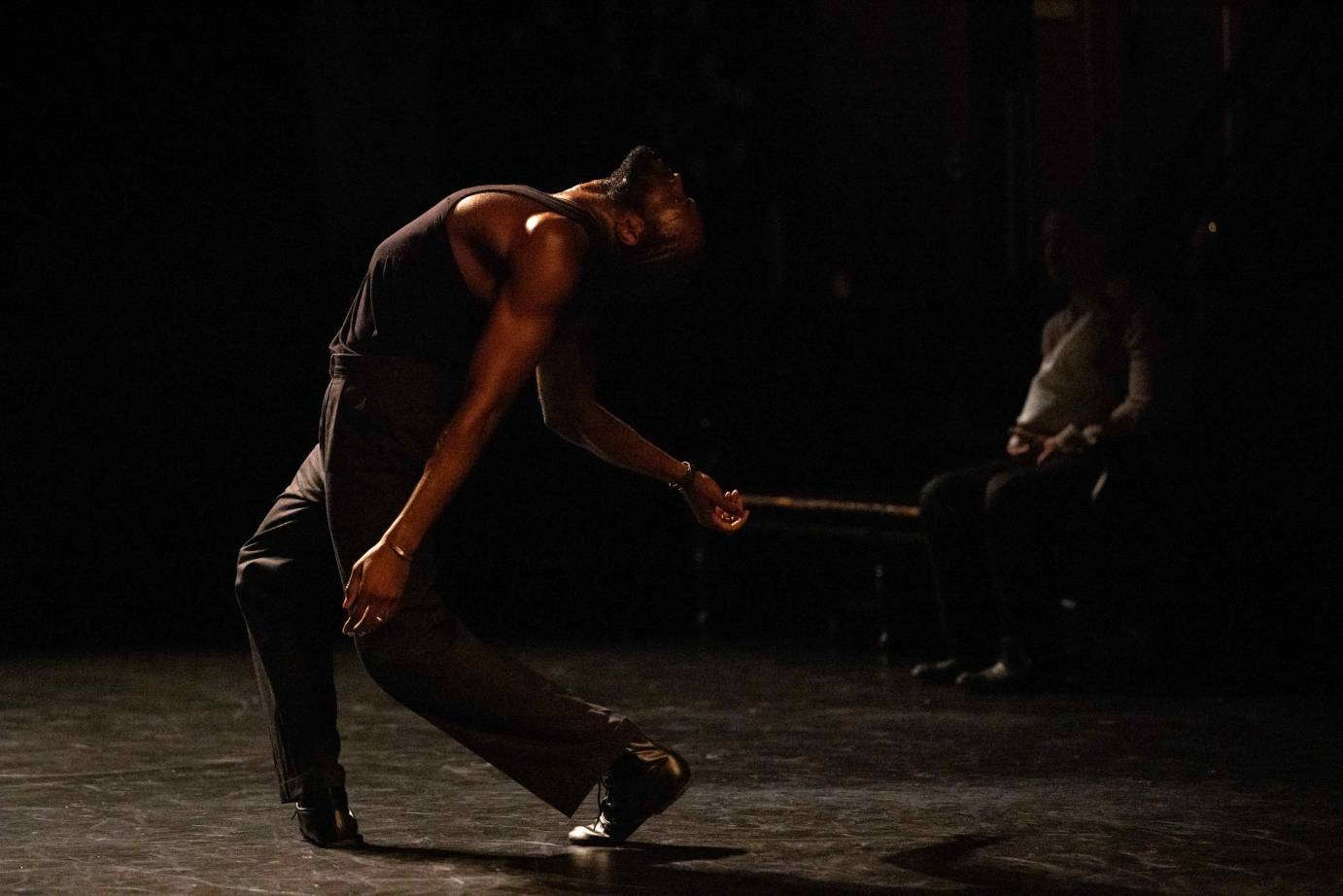
Vinson Fraley and Yiannis Logothetis; photo by Maria Baranova
Broken Theater possesses the charm and freedom of a child’s imagination, constantly blurring the edges between reality and fantasy. When dancer Or Schraiber, as if possessed by an ape, aggressively beats his chest and maneuvers around the space on all-fours, I know I’m watching a performance. But I sometimes forget to suspend disbelief and assume the artists are experiencing everything they portray. Sometimes, players break character and speak directly to the audience, like when Bobbi begins introducing the cast mid-performance. But because these character breaks are deliberately written into the score, it’s impossible to distinguish if the actors are playing a part or being themselves. Maybe it’s both? Which brings up the existential question; is there a difference?
“It’s always been a goal of mine to get lost in the piece or the part I’m playing,” says Bobbi. “To completely surrender to the moment… but what if you lose track? What if that goes too far? What if the role you are playing alters who you are? Where are the lines? Do we need them?”
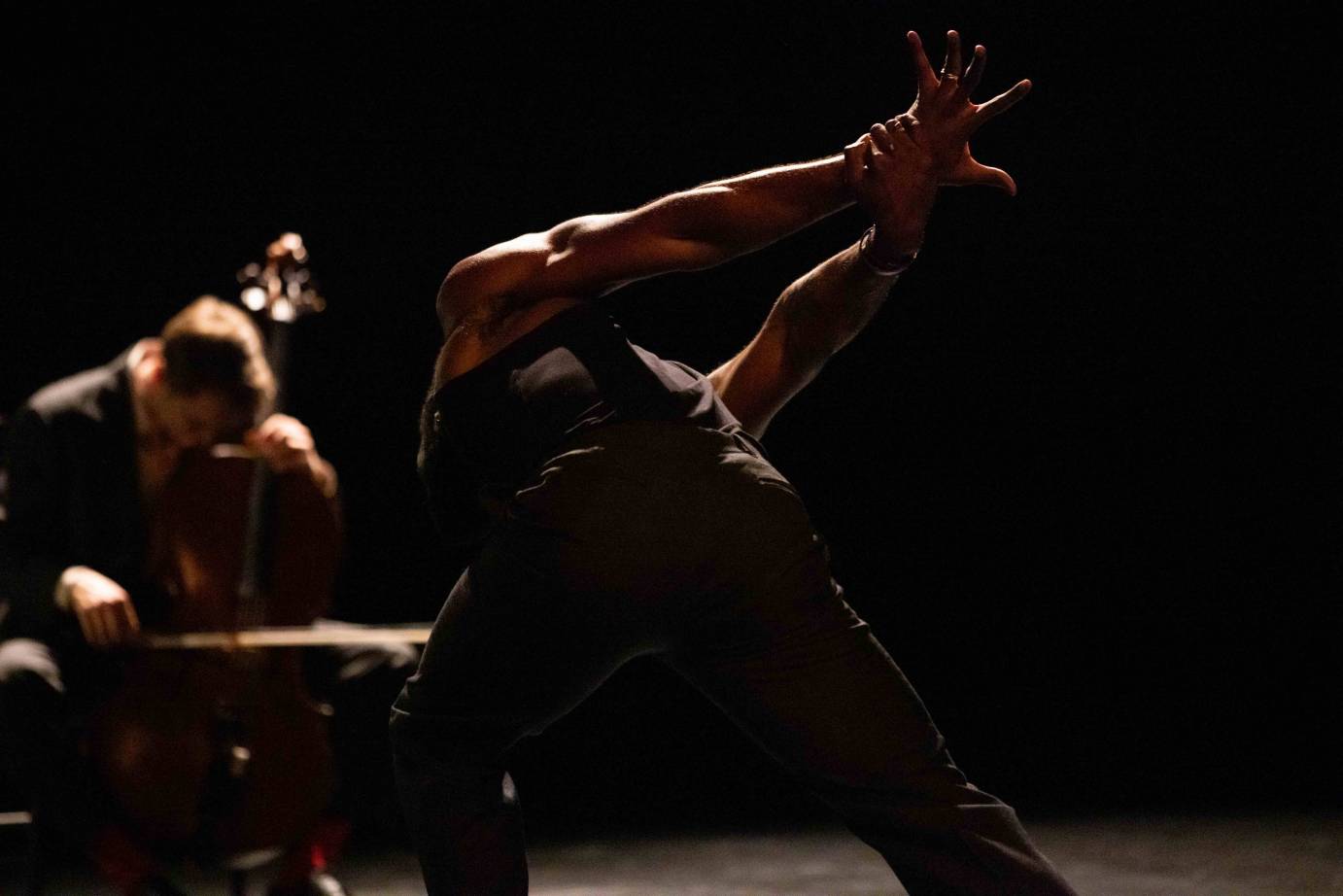
Coleman Itzkoff and Vinson Fraley; photo by Maria Baranova
Other lines are blurred in Broken Theater. The rehearsal is performed, and the performance is rehearsed. Thus, it’s unclear when the show begins and ends — a magical feeling I won’t soon forget. This concept is inspired by Bobbi’s time with Batsheva Dance Company in Tel Aviv, Israel, where they would frequently hold “open rehearsals”, which she says, “always struck me how much these ‘rehearsals’ felt more like performances than the performances themselves.”
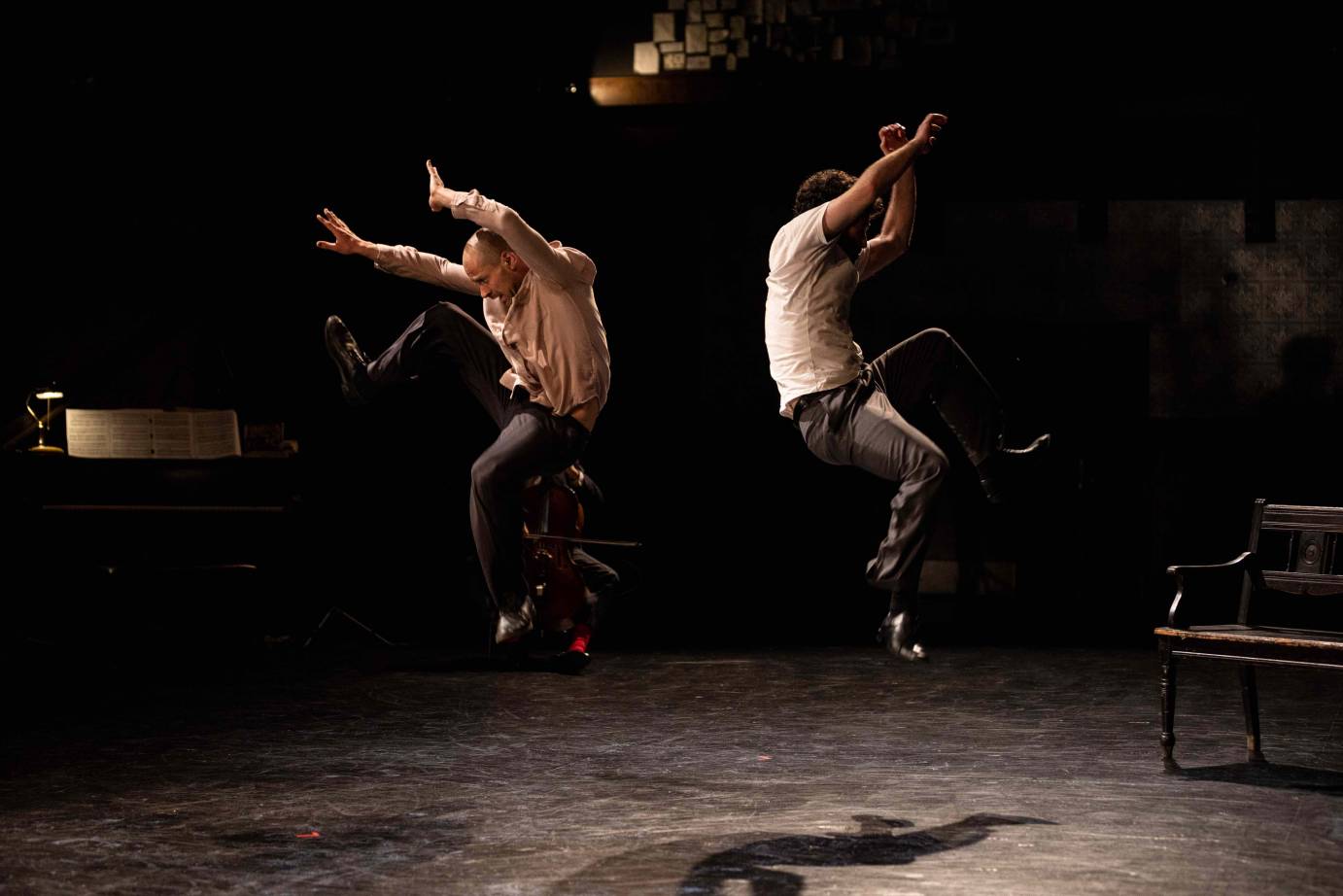
Yiannis Logothetis and Or Schraiber; photo by Maria Baranova
Unpretentious and unassuming, Broken Theater touches on heavy themes of family, love, anger, and personal struggle, yet doesn’t pretend to have the answers to life’s biggest questions. If anything, the work presents more questions than answers and challenges us to suspend the human urge to constantly define the unknown.
Instead of viewing questions as problems to be solved or conquered, what if we embrace our fear of not knowing? What if we accept the ambiguity and brokenness? And “it’s not just the broken theater,” says Bobbi. “It’s our broken hearts and dreams.”
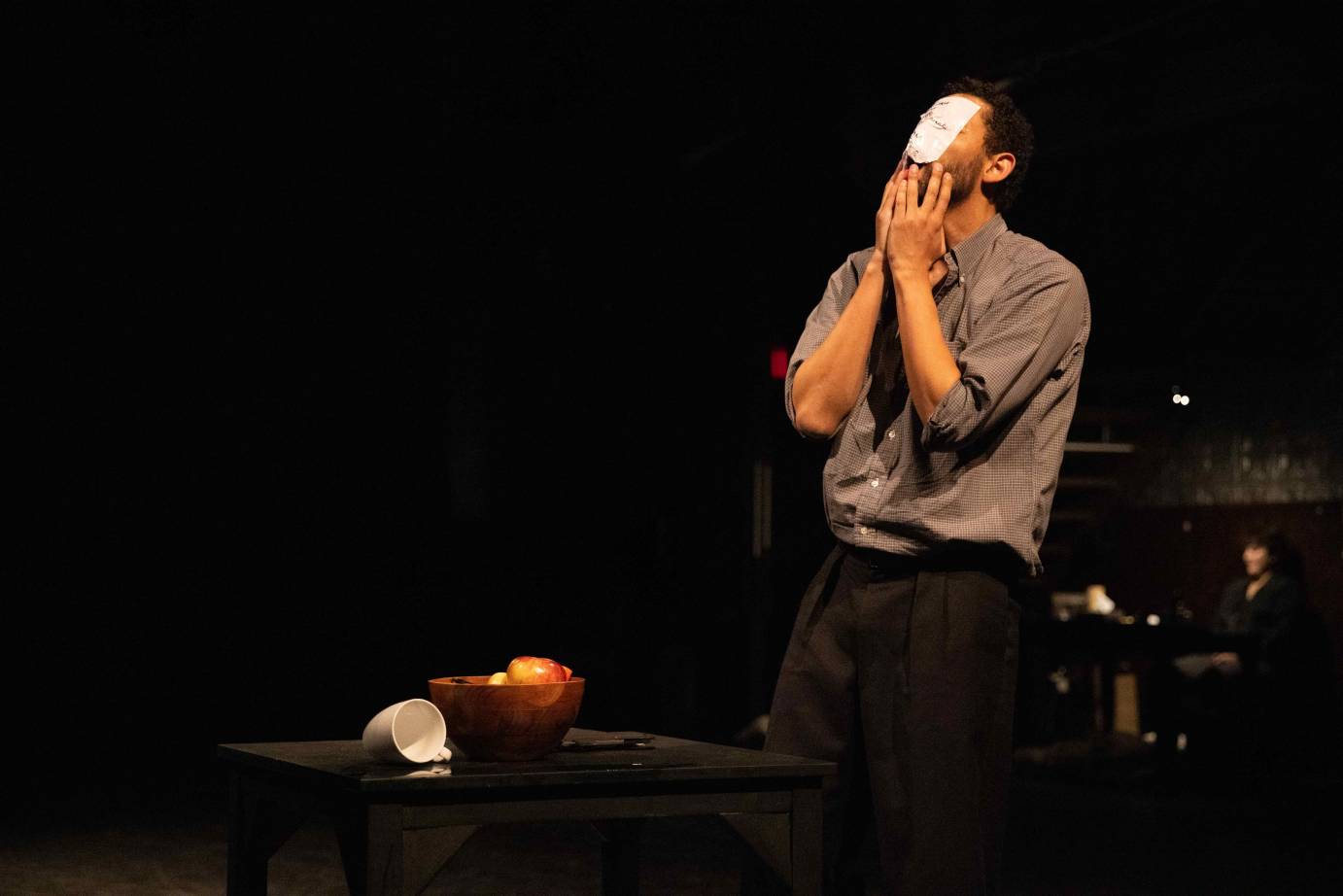
Jonathan Fredrickson; photo by Maria Baranova
In this liminal gray space, where no single character or story can be pinned down, our hearts and minds are free to wander, discover, and be inspired by the moments that resonate most deeply to us. As for Bobbi, “Human character is my biggest inspiration,” she says.







